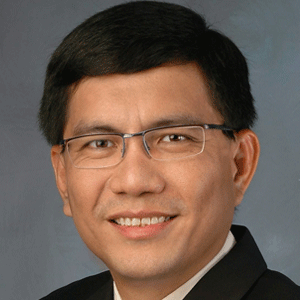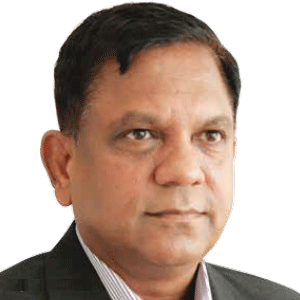THANK YOU FOR SUBSCRIBING

The Digital Movement- Keeping Government Relevant in the Face of Digital Transformation
Chan Cheow Hoe, Government Chief Information Officer-designate, Government Technology Agency, Singapore


Chan Cheow Hoe, Government Chief Information Officer-designate, Government Technology Agency, Singapore
In the early part of this century, Marc Andreessen was prophetic in saying that “software is eating the world”. Today, the truth lies before us. More and more major businesses and industries are being run on software and delivered as digital services—from music to toys to medical services to national defense. Many of the winners are Silicon Valley-style entrepreneurial technology companies that are invading and over turning established industry structures.
Unfortunately most governments are still playing catch-up and risk losing relevance to citizens in the digital space. The digital divide is getting wider by the day. How ever there is hope. A new breed of non-government natives are breaching the traditional walls of bureaucracy and leading the digital movement to improve user experience, citizen engagement and building digital communities. From US to UK to Scandinavia to Singapore, collaboration between government officials, techno preneurs and digital natives are creating a new digital economy based on software, data and things. In Singapore, the creation of the Government Technology Agency, or GovTech, for short, is a strong signal that the Singapore government will play a significant role in the digital movement to amplify the rallying cry of Smart Nation. Indeed software is eating government.
Check this out: Top Government Tech Solution ProvidersChanging mindsets and paradigm
Two years ago, when I first joined the public sector, I realized that my colleagues used to look at me quizzically when ever I mentioned “customers”. One day some one mustered enough courage to correct me and said, “You are no longer in the private sector, we do not have customers here.” That comment made me realize that I have a much bigger job ahead of me than I thought. All the work we were doing was based on an “inside-out” view of the world. It was supply driven, where each government agency “knows” what the citizen needs and will do them a favor by delivering those services to them. It was a government-centric view of the world.
"The abundant availability of data makes the Government a ‘candy store’ for data scientists and digital warriors"
The transformation from an “inside-out” to an “outside-in” view of the world through the eyes of citizens is happening quickly. More and more services are being designed with the citizen’s needs in mind, cutting through most of the friction and bureaucracy that is synonymous with government. For example, it is actually quite difficult to find the right agency to report an issue to government. Be it a choked drain or a dead animal or a fallen tree, which is the right agency to deal with the problem. A year ago, an outside-in approach was taken to solve this problem and the One Service app was created to simplify citizen interaction with government. The focus on UX and design thinking has helped changed the mind sets of many around us and made us realize that we are citizens, too. Being citizen-centric, anticipatory and demand focused is transforming the way we approach all new services and the way government is engaging citizens – software driven or other wise. It will continue to change our operating paradigm in the years to come.
Innovation, disruption and practicality
To many, innovation and government is an oxymoron. How can government be innovative when it is inherently bureaucratic and conservative? Innovation can become an aimless, expensive and disappointing endeavor as the lure of the holy grail can make us lose sense of practicality. After all, we are spending public money and full accountability is needed.
The pursuit of talent
The digital movement is a war for talent. I saw a t-shirt that was quite funny. It quoted the Bible “The meek shall inherit the earth”. But was struck out and replaced with “geek”. The image of tech specialists as “factory workers” in the sweat shops of India or Philippines is slowly being replaced by “master craftsmen” at Google and Facebook with degrees from Stanford and MIT. The game has changed from cost leadership to differentiation as described by Michael Porter in Competitive Advantage.
Government faces an uphill task in attracting world-class tech talent. In terms of compensation, prestige, infrastructure and culture, there is no way to match the likes of the Silicon Valley firms or startups.
The abundant availability of data makes the government a “candy store” for data scientists and digital warriors. There is a place for tech talent in government and many countries have shown that it is possible and sustainable to create a technical core.
Staying agile and relevant
In the digital movement, it is apparent that the only way to stay relevant is to stay agile. Agile is not just a software development concept; it is embedded into the culture of all customer focused companies. Making the paradigm shift in government to become more customer focused, necessitates a shift to agility. This fundamental shift is very difficult for all governments as the status quo is based on stability and predictability. The emergence of a bi-modal organization is key to success. The agility movement needs not threaten the stability of day-to-day operations. The two modes are like two sides of a coin and must co-exist for the government to function properly. Both modes are important. One of the biggest challenges is to build collaboration between the two modes to become mutually reinforcing instead of mutually destructive. Every one can be successful as this is not a zero-sum game. Mode one is focused on operational effectiveness and stability; mode two is focused on transformation. Both modes can be agile and innovative in the pursuit of their common goal to serve the citizen.
The digital movement is here to stay and government is not excluded from this revolution. It is heartening to see that many governments are taking this movement head on and transforming its relationship with citizens digitally. Government will probably never be like an Amazon or Facebook because the roles are different. People go to commercial organizations because they want to. Most of the time people go to government because they have to. At least when they have to come to government, it is a pleasant and productive experience.
Weekly Brief
I agree We use cookies on this website to enhance your user experience. By clicking any link on this page you are giving your consent for us to set cookies. More info
Read Also
Artificial Intelligence - Myths And Truths
Sustainable Future through Innovative Technology Solutions
The Future Relies on Augmented AI
Digitalization with the use of digital technologies/Improving business through digital technologies
How Marco's Pizza Leaned On Technology To Succeed Amid The Pandemic By Quickly Pivoting To Contact-Free Delivery And Curbside Carryout
Bunnings Diy Digital Transformation
For a Smarter City: Trust the Data, Ignore the Hype
Smart Community Innovation for the Post Pandemic





















